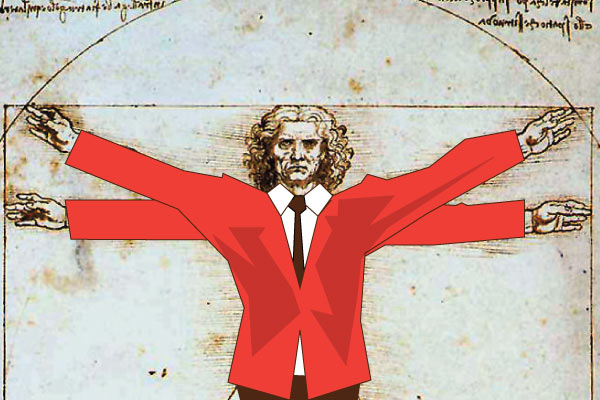What If the First Animals to Crawl Out of the Ocean Had Six Limbs Instead of Four?

During the new DC Comics Universe series "Flashpoint," in which a time-traveling supervillain alters the past to warp the present, Life's Little Mysteries presents a 10-part series that examines what would happen if a major event in the history of the universe had gone just slightly different.
Part 5: What if ... the first animals to crawl out of the ocean had six limbs instead of four?
All land vertebrates mammals, birds, reptiles and amphibians are or were tetrapods, which have two sets of paired limbs. (Snakes evolved from four-limbed lizards.) This shared body plan dates back to the late Devonian period, about 400 million years ago, when lobe-finned fish began exploiting new ecological niches in wetlands and eventually made the transition to terra firma.
Life would be: Quite likely in need of more pant legs and sleeves, at least if the descendent creatures were of the clothes-wearing variety.
Although paired upper and lower fins developed in bony fish, the precursors to tetrapods, there is not a lot of evidence that this anatomy was selected over, say, three pairs or four pairs for any evolutionarily reason. "You could consider it somewhat arbitrary," said Edward Daeschler, associate curator at the Academy of Natural Sciences in Philadelphia. Land vertebrates all share the same basic design, but could it be different? Absolutely."
Creatures with more than four limbs have not evolved in land species. In fact the trend is to simplify, as with snakes, which lost their limbs, and horses , which instead of having five digits have one (a hoof). Six, eight and even leggier arthropods (insects, arachnids and crustaceans) have, of course, been extraordinarily successful six-limbed beetles alone comprise a quarter of the 1.7 million described species. But the fact that these creatures have exoskeletons rather than bones inside their bodies limits their size, Daeschler told Life's Little Mysteries.
Large exoskeletons needed to support internal body tissue would be prohibitively cumbersome and heavy, plus would demand lots of energy to move and grow. Because intelligence is strongly linked to how big, intricate and energy-consuming an animal's brain is, that sentience is unlikely to evolve in bugs.
Get the world’s most fascinating discoveries delivered straight to your inbox.
Previously: What would life be like if there were more than two dominant sexes ?
Next: What would the world be like if the moon had never formed ?
Head to Newsarama.com for complete Flashpoint coverage.




